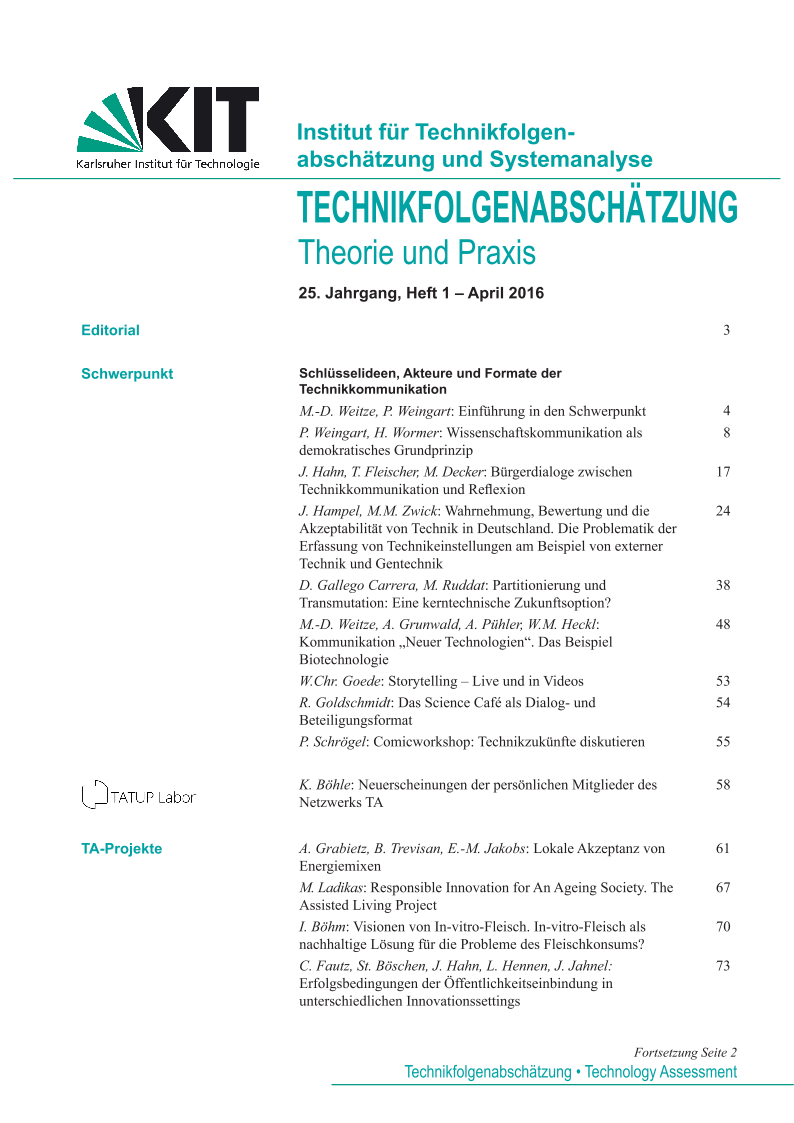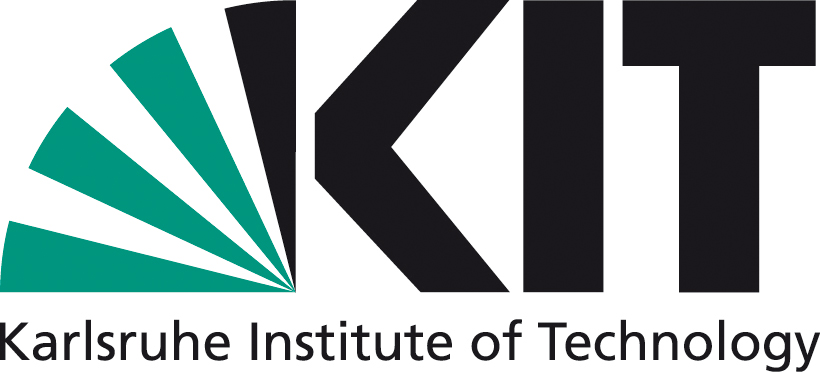Partitionierung und Transmutation
Eine kerntechnische Zukunftsoption?
DOI:
https://doi.org/10.14512/tatup.25.1.38Keywords:
Deutschland, Energiewirtschaft [10.3c], GND, Kernumwandlung, Radioaktiver Abfall, Trennverfahren, ZukunftAbstract
Heat-generating high-level radioactive waste is potentially dangerous for a very long time. It has to be stored in a high security repository, which doesn’t exist today in Germany. The technology of Partitioning and Transmutation (P&T), which is to convert part of the longlived high-level radioactive substances contained in the spent fuel rods into shorter-lived fission products (Knebel et al. 2013; Lübbert/Ahlswede 2008), is currently under research and development. It could be one way of reducing the long-term hazard potential of heat-producing waste. Until recently, technical aspects dominate the scientific debate about P&T. Social implications of P&T were now at the center of an interdisciplinary research project using scenario techniques. This article describes four societal development scenarios (abstinence, research participation, European systems participation, application in Germany) with different chances and risks of P&T and gives recommendations for future action and communication.








